So, you’re thinking about making your outdoor space better? Landscape design is really where it all starts. It’s more than just plants or some random decorations—it’s about shaping a spot that feels like you.
Landscape design lets you turn your yard or garden into a place that’s both beautiful and actually works for your life.
Your outdoor space could be your own quiet getaway, or maybe it’s where everyone gathers for a barbecue. Sometimes, it’s both.
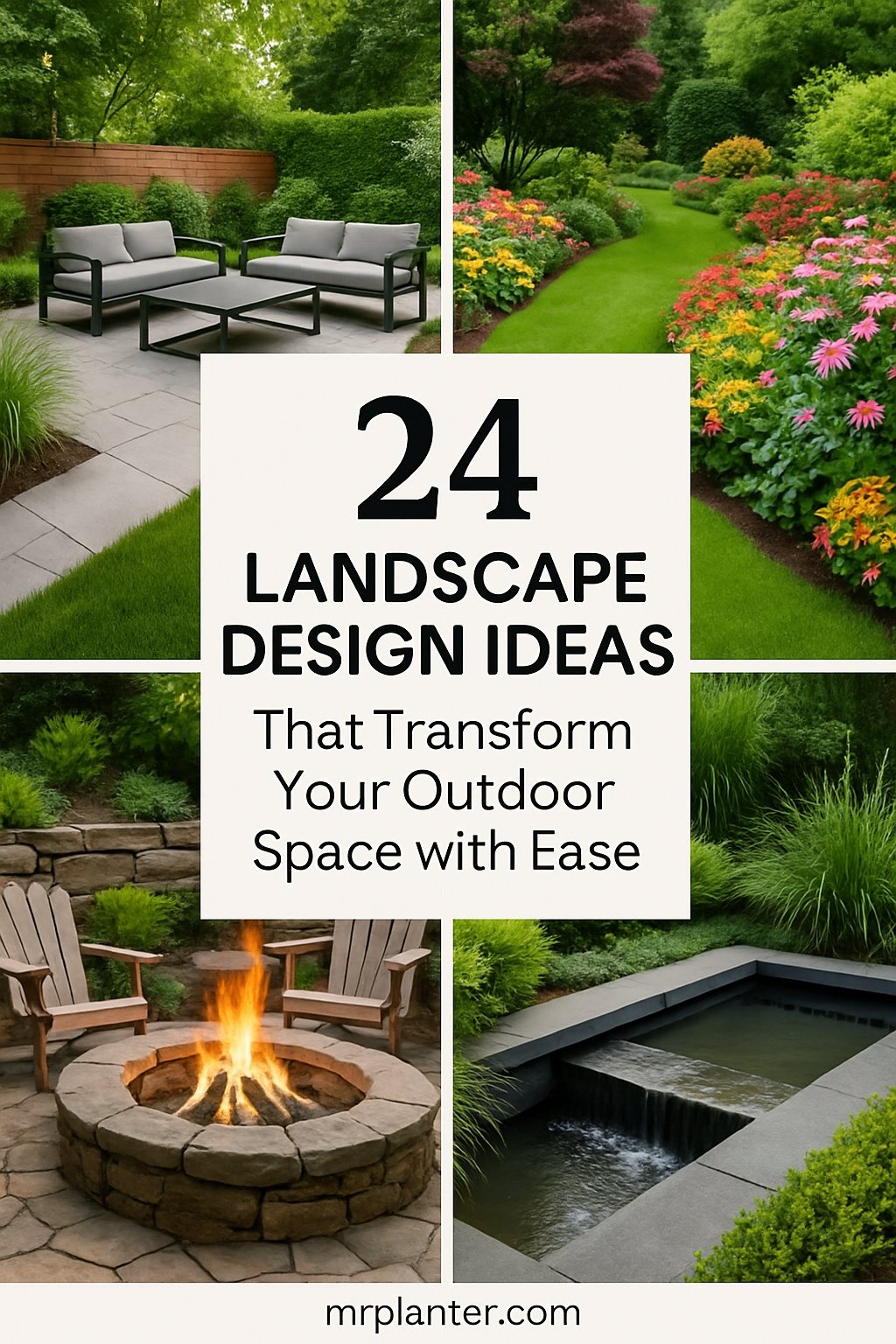
With the right ideas and a bit of planning, you can make every corner look good and feel just right. Whether you want a total overhaul or just a few tweaks, good design makes your space work for you all year.
1. Start with a clear landscape purpose: relaxation, entertaining, or play.

Let’s be real, your yard can’t do everything at once, even if you wish it could. Picking one main purpose just makes it easier to focus on what you actually want.
If you’re after peace and quiet, maybe you’ll want a comfy chair or a little fountain. If you love hosting, think about space for friends, like a dining table or fire pit.
Got kids or pets running around? Open space or play structures make the most sense. Figuring out what matters most helps you make choices that keep your yard fun and useful.
Expert Tip From MrPlanter: Decide what you actually enjoy outdoors before you start buying plants or furniture. You’ll end up with a space you actually use, not just something that looks good in photos.
2. Assess your yard’s sunlight and shade patterns
It’s funny how easy it is to forget your yard isn’t just one big sun or shade spot. The sun moves, and suddenly that sunny patch is shady by afternoon.
Take a few days to really watch where the sun lands and where the shadows creep. Morning, noon, evening—they all look different.
Jot down what you notice. You’ll spot the best places for sun-lovers and where shade-loving plants will be happiest.
Trees and buildings can shift those patterns over time, so check again when the seasons change. If you track the light, you’ll plan a garden that actually thrives.
Expert Tip From MrPlanter: Walk your yard at different times of day and just notice the light. It’s a tiny habit that pays off big when your plants start looking happy.
3. Choose native plants for easier care and sustainability

You might imagine gardening means you’ll be watering forever or always battling bugs. But if you pick native plants, you’re actually making life easier.
Native plants already know your weather, your soil, and your seasons. They just grow—no fuss, no drama.
They support local birds, bees, and butterflies, so your garden feels alive and balanced. You save water, you save time, and honestly, your garden does more good for the planet.
When you work with nature instead of fighting it, the whole process just feels better. Your yard helps the environment instead of draining your energy.
Expert Tip From MrPlanter: Start with a couple of native plants you think are pretty. You’ll be amazed at how little care they need—and how much wildlife starts showing up.
4. Incorporate a mix of evergreens and seasonal blooms

Evergreens are kind of the unsung heroes in a garden. They keep things green and lively when everything else takes a break.
Add in some seasonal flowers or perennials, and suddenly your yard pops with color and feels fresh every few months.
Try planting spring bulbs, summer flowers, or autumn perennials around your evergreens. You’ll get new blooms and textures, while the evergreens hold things together.
It’s a simple way to make sure your garden never feels empty, no matter what month it is.
Expert Tip From MrPlanter: Pick plants that bloom at different times. That way, your garden always has something going on, and you don’t have to work too hard to keep it looking good.
5. Create focal points with sculptures or water features
You know that feeling when your eye lands on something special in a garden? That’s what a sculpture or water feature does.
A sculpture acts like art for your yard. Pick one that fits your vibe—modern, classic, or even a little quirky.
Water features, like a fountain or a small pond, add gentle sounds and movement. They make the space feel peaceful and alive.
The way water catches light can totally change the mood throughout the day. And honestly, who doesn’t love the sound of trickling water?
Expert Tip From MrPlanter: Choose something that feels like you and fits your space. Don’t go overboard—a simple piece can stand out just right without taking over.
6. Add winding pathways for a sense of discovery

Ever notice how a curvy path makes a garden feel a little more magical? Winding pathways invite you to slow down and see what’s around the next bend.
Curved trails can lead you past tall plants or into hidden nooks. Maybe you’ll stumble on a cozy bench or a quiet spot you didn’t expect.
Using natural materials like stone or gravel keeps your path feeling relaxed. Soft edges and gentle turns are just more inviting than straight lines.
It’s about creating a gentle journey through your space, not just a shortcut.
Expert Tip From MrPlanter: Plant taller shrubs or flowers along the curves. Hiding what’s ahead keeps the walk interesting and makes your garden feel bigger than it is.
7. Use layering: tall shrubs in back, shorter plants up front

Layering plants isn’t just for looks—it totally changes how your garden feels. When you put the tall stuff in back, the smaller plants finally get their moment.
This setup adds depth and makes everything look fuller. Mix up colors and textures so each layer draws the eye in a new way.
Taller plants can give a little shade to the ones in front, so everyone stays happy. It’s a trick that makes your yard feel lush and welcoming.
Expert Tip From MrPlanter: Take your time with layering. It’s worth it—your garden will look great and stay healthy, season after season.
8. Think about color contrast and harmony across seasons
Your garden’s colors don’t have to be the same all year, you know? If you plan for color contrast and harmony, your space stays lively no matter the season.
Try pairing bold flowers in spring with deep greens or rich reds in fall. It keeps things balanced but never dull.
Mixing textures—like shiny leaves with fuzzy ones—gives you even more contrast. Pick plants that bloom at different times, so there’s always something happening.
Your garden turns into a living piece of art that changes with the months.
Expert Tip From MrPlanter: Choose a few colors you really love and repeat them through the seasons. It keeps things harmonious and makes your space feel cheerful all year.
9. Build raised garden beds for better soil and accessibility
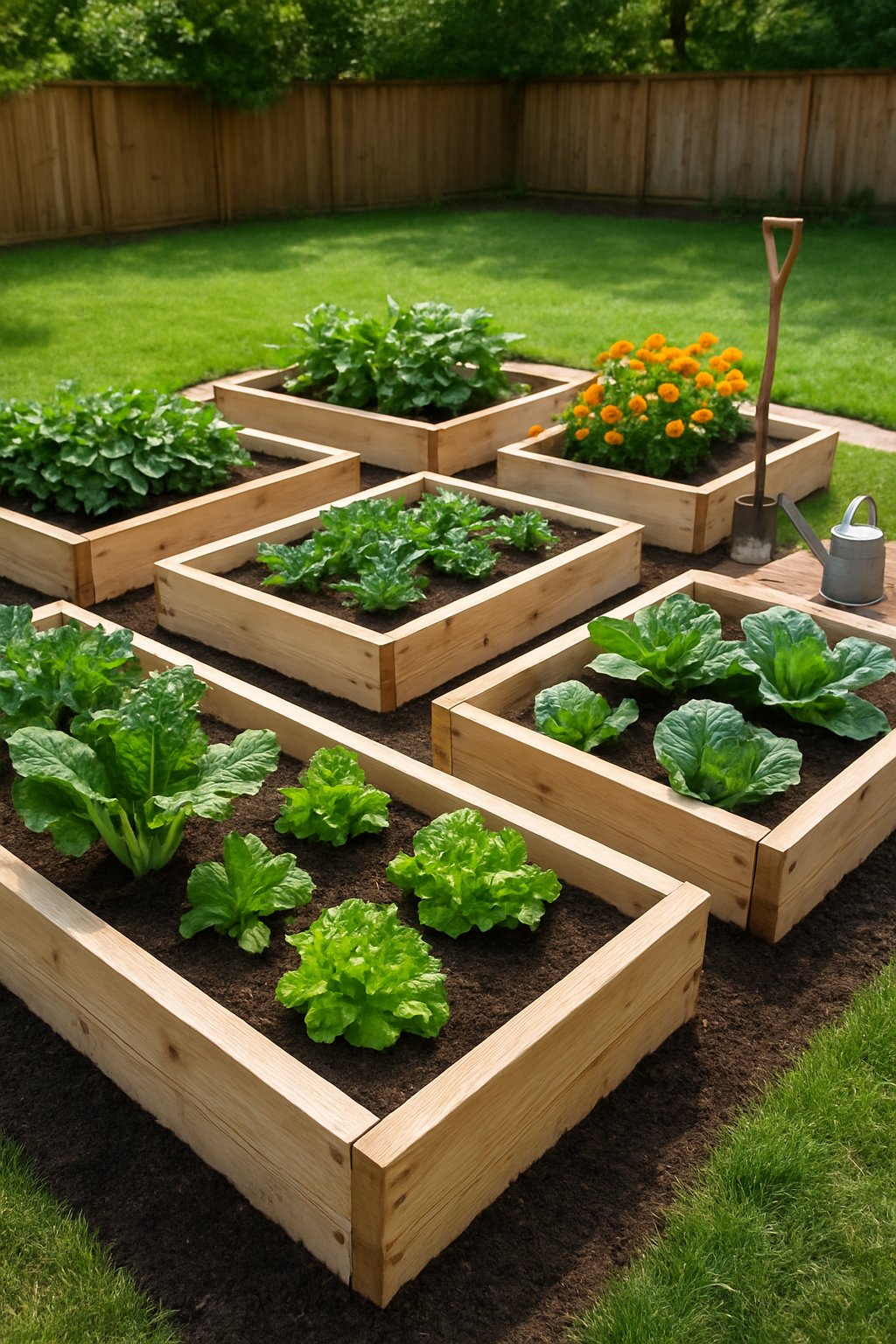
Raised beds aren’t just about looks—they actually make gardening easier. When you lift your plants off the ground, you get better drainage and healthier roots.
Raised beds warm up faster in spring, so you can plant earlier and harvest more. The soil stays fluffy and rich, which plants love.
If bending over is tough, raised beds bring everything up to you. Your back and knees will thank you, trust me.
They’re perfect for anyone who wants gardening to feel fun instead of like a chore.
Expert Tip From MrPlanter: Find a sunny spot for your raised bed. Use good soil and water enough, but don’t drown your plants. It’s simple, but it works wonders.
10. Include edible plants like herbs or berries for function
Edible plants aren’t just for vegetable patches—they can look great, too. Herbs like rosemary or basil smell amazing and fit right in with flowers.
Berries, like blueberries, add color and give you sweet snacks. You get a garden that’s useful and beautiful at the same time.
Pick fresh herbs for dinner or make a tea from your own leaves. Berries attract birds, so you’ll get more life in your yard.
Mixing edible plants with your regular ones adds texture and keeps things interesting. They fill in gaps, climb fences, or make easy borders.
You get to harvest your own food and enjoy a garden that looks and feels alive.
Expert Tip From MrPlanter: “Start small with easy herbs like mint or chives—they grow fast and don’t need much attention. Add berries for color and snacks, and watch your garden become a place you want to hang out.”
11. Plan outdoor lighting along paths and around seating
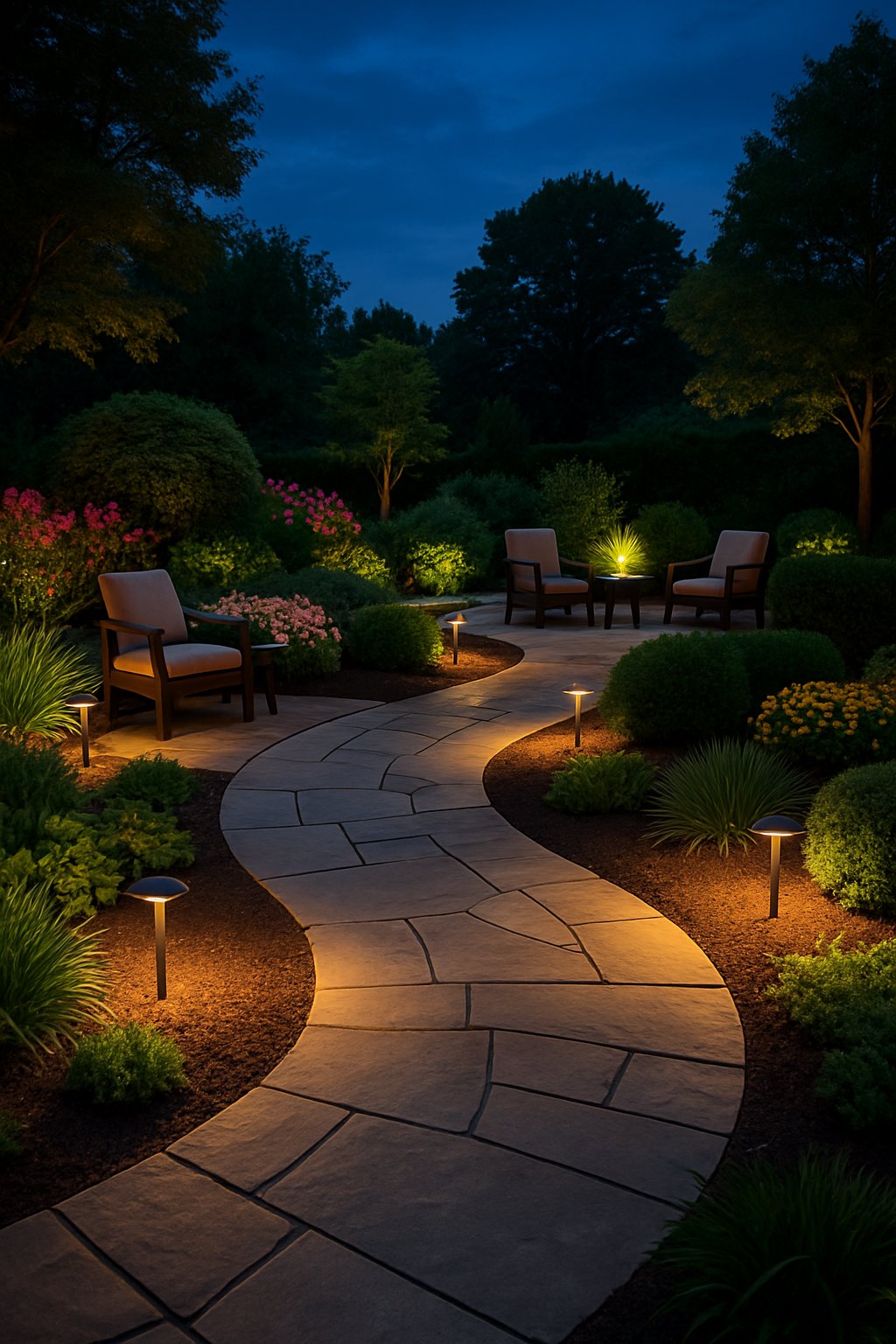
Lighting can totally change how you use your outdoor space. Path lights keep you safe and show off your garden’s best bits even after dark.
Low, soft lights along walkways guide your steps without feeling harsh. Around seating areas, go for warm, cozy lighting—think string lights, lanterns, or gentle spotlights.
Mix up your lights for safety and style. The right lighting makes your yard feel welcoming, whether you’re out there alone or with friends.
Expert Tip From MrPlanter: “Start with path lights to keep walkways clear. Then add soft lighting near seats for that warm, inviting glow.”
12. Install a rain garden to manage water smartly
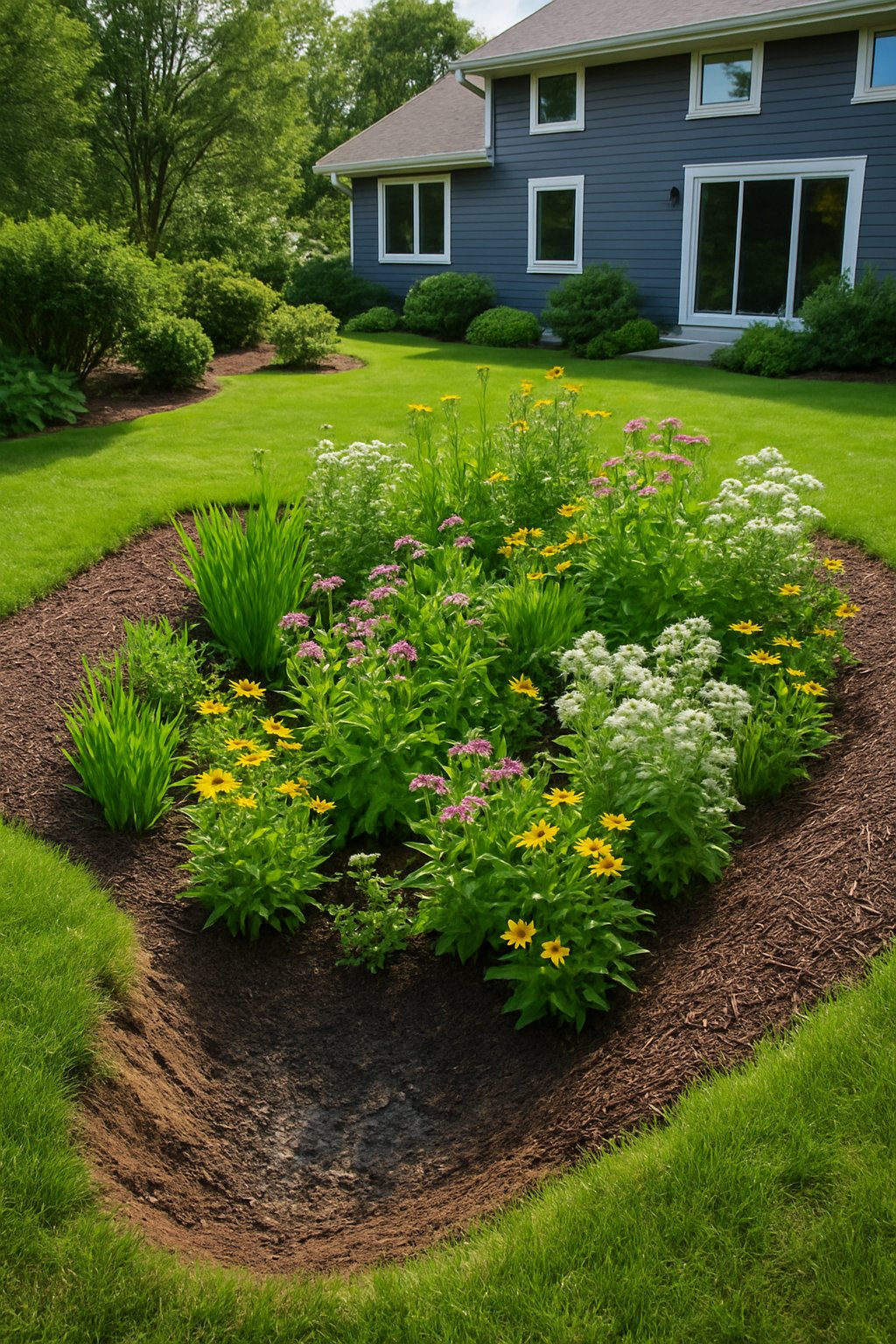
Ever thought your yard could actually help clean rainwater before it heads off to rivers and streams? It totally can! A rain garden gives stormwater a place to slow down, so it doesn’t flood or drag dirt and pollution away.
You dig a shallow dip, toss in some rich soil, and plant flowers or grasses that can handle wet feet. When rain falls, water gathers there and soaks in, instead of racing off your driveway or roof. That keeps your landscape happier and helps the local water stay cleaner.
Once you set it up, a rain garden barely asks for attention. Plus, it brings a pop of color and a little wildness to your yard.
You get a smart, good-looking garden that’s working for you and the environment—pretty cool, right?
Expert Tip From MrPlanter: Go for native plants that can take both soggy and dry spells. You’ll thank yourself later—local plants make rain gardens way easier to keep up.
13. Use mulch to retain moisture and reduce weeds
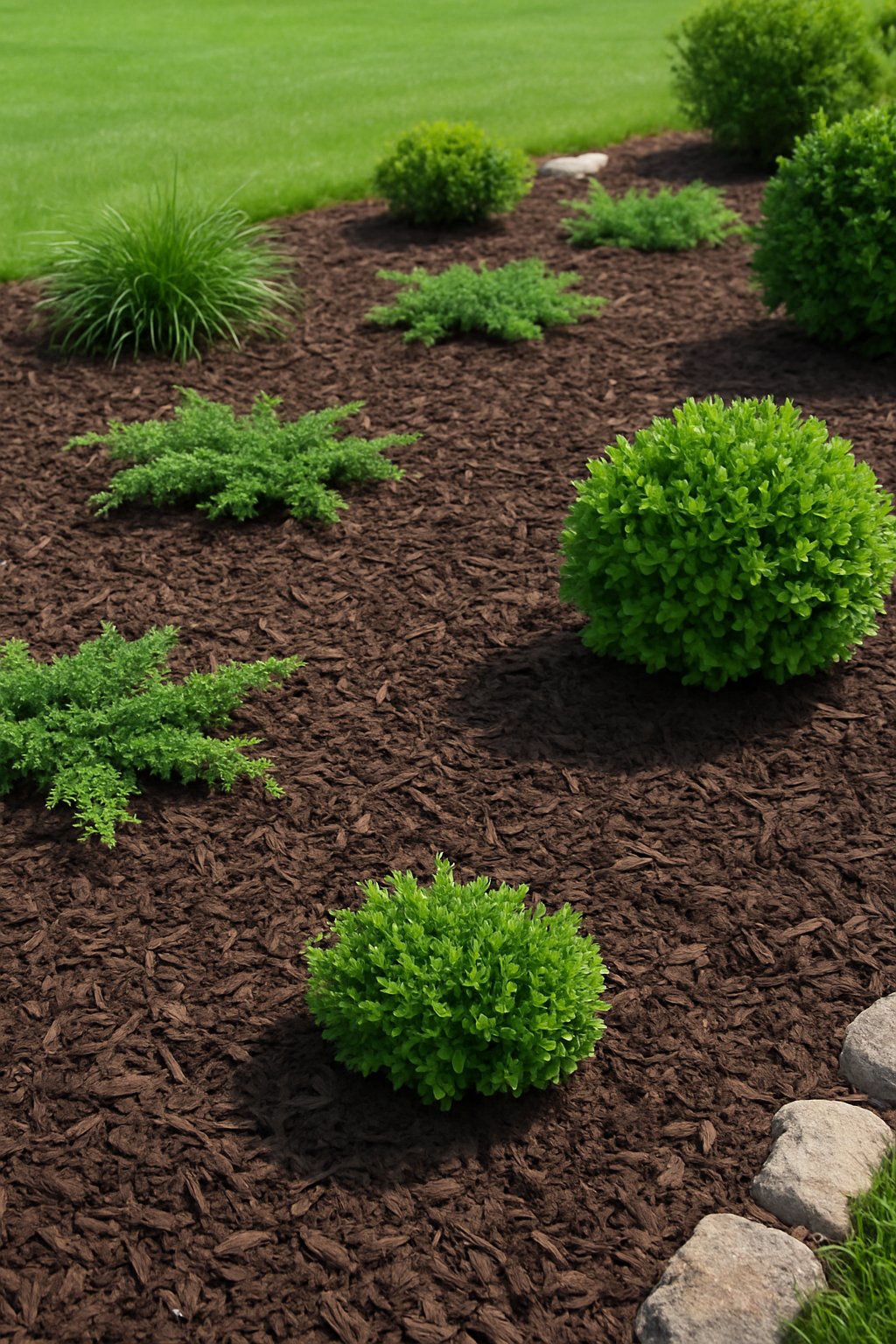
Did you know mulch can cut down your garden’s watering by up to 70%? It’s like a cozy blanket for your soil, locking in moisture so your plants stay happy longer.
You’ll water less, which is always a win. Mulch also puts a stop to weeds by blocking sunlight, so you’re not stuck pulling them every weekend.
If you use organic mulch like wood chips or straw, it slowly breaks down and feeds your soil. Just spread a couple inches around your plants, but keep it off the stems to avoid rot.
You don’t have to do much—just top up your mulch each season and let it do the heavy lifting.
Expert Tip From MrPlanter: Give your mulch a refresh every season. It’s a small step that saves you time, water, and a lot of hassle in the garden.
14. Incorporate seating areas with comfy benches or swings.
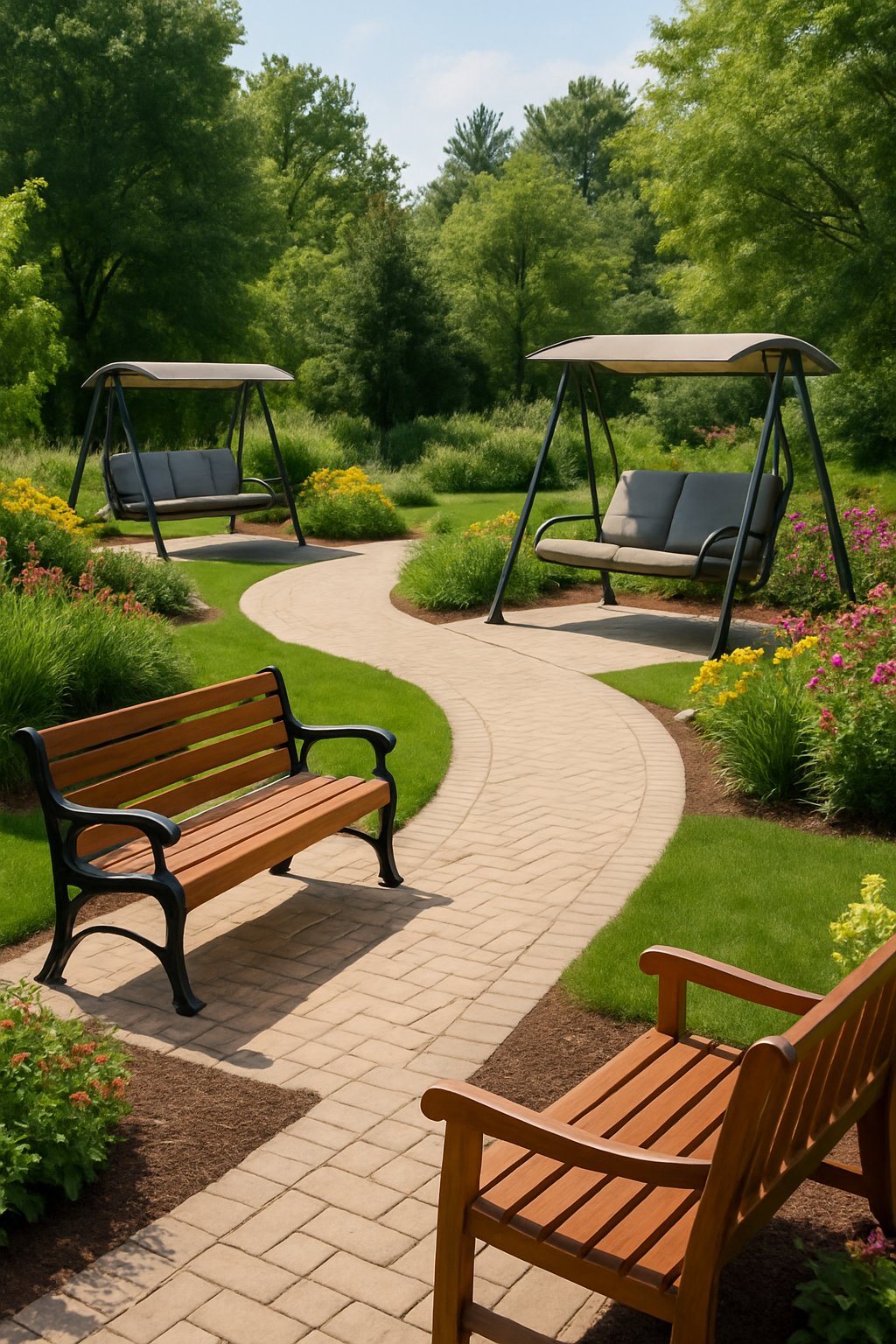
Ever notice how a bench or a swing can make a garden feel instantly more inviting? A comfy spot to sit turns your backyard from just a patch of grass into a real hangout.
Pick benches with soft cushions or toss on a few pillows. Swings are awesome too—they add a gentle sway while you soak up the fresh air.
Try putting your seat near something interesting, like a fire pit or a pond. You’ll find yourself wanting to spend way more time outside.
Expert Tip From MrPlanter: Choose weather-proof cushions so your bench stays comfy year-round. A little side table nearby? Perfect for your coffee or book.
15. Blend hardscape materials: stone, wood, and metal
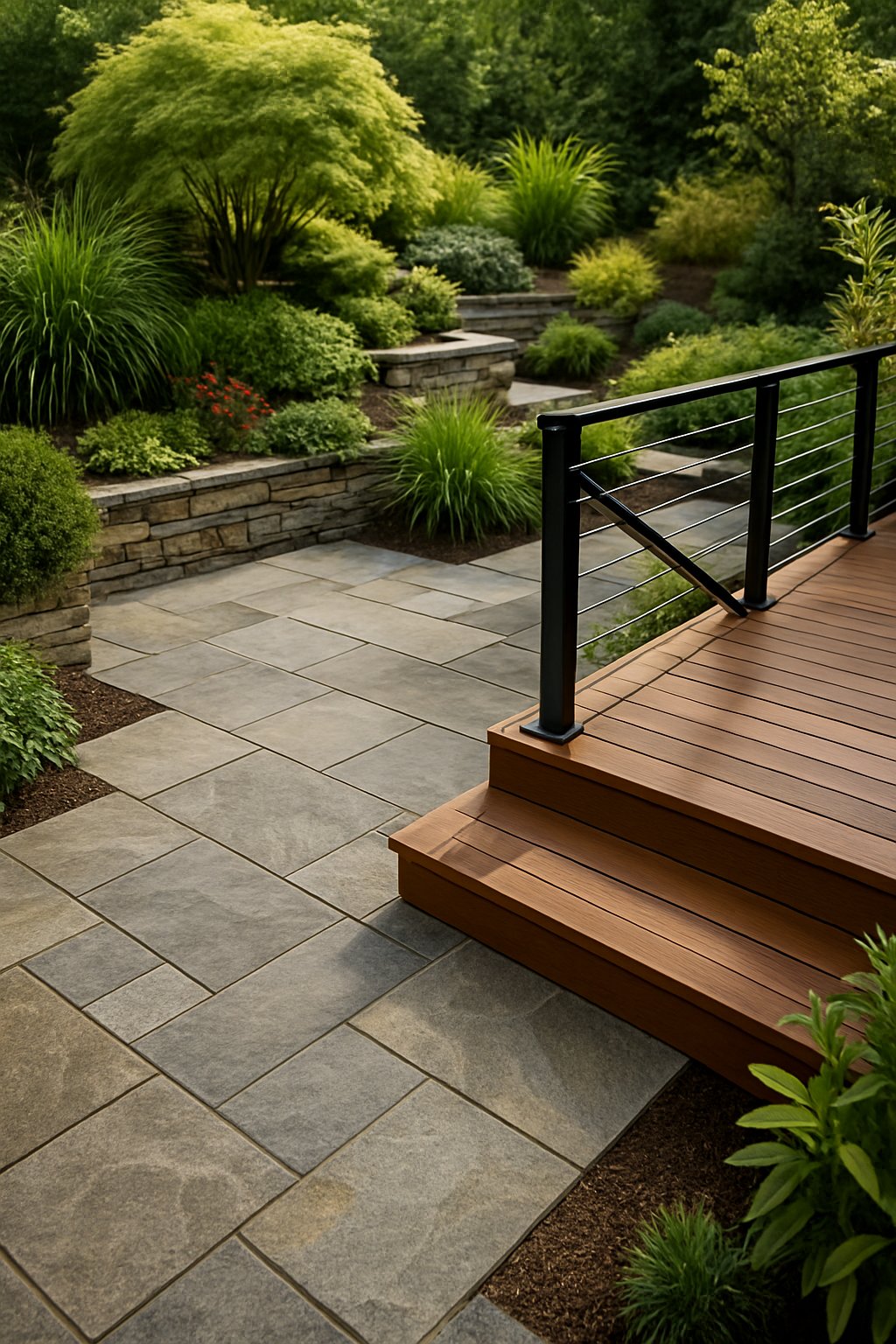
Don’t you get bored seeing the same old patio everywhere? Mixing stone, wood, and metal gives your outdoor space a ton of character.
Stone brings a solid, natural vibe—great for paths or patios. Wood warms things up and softens the look, while metal adds a modern twist.
When you blend these, it’s all about balance. Too much wood can feel like a cabin, and too much stone might get chilly. Mixing them lets you find your own style, whether that’s cozy, sleek, or somewhere in between.
Expert Tip From MrPlanter: Try layering different materials in small areas first. It’s the easiest way to see what clicks before you commit.
16. Add privacy screens with hedges or lattice panels
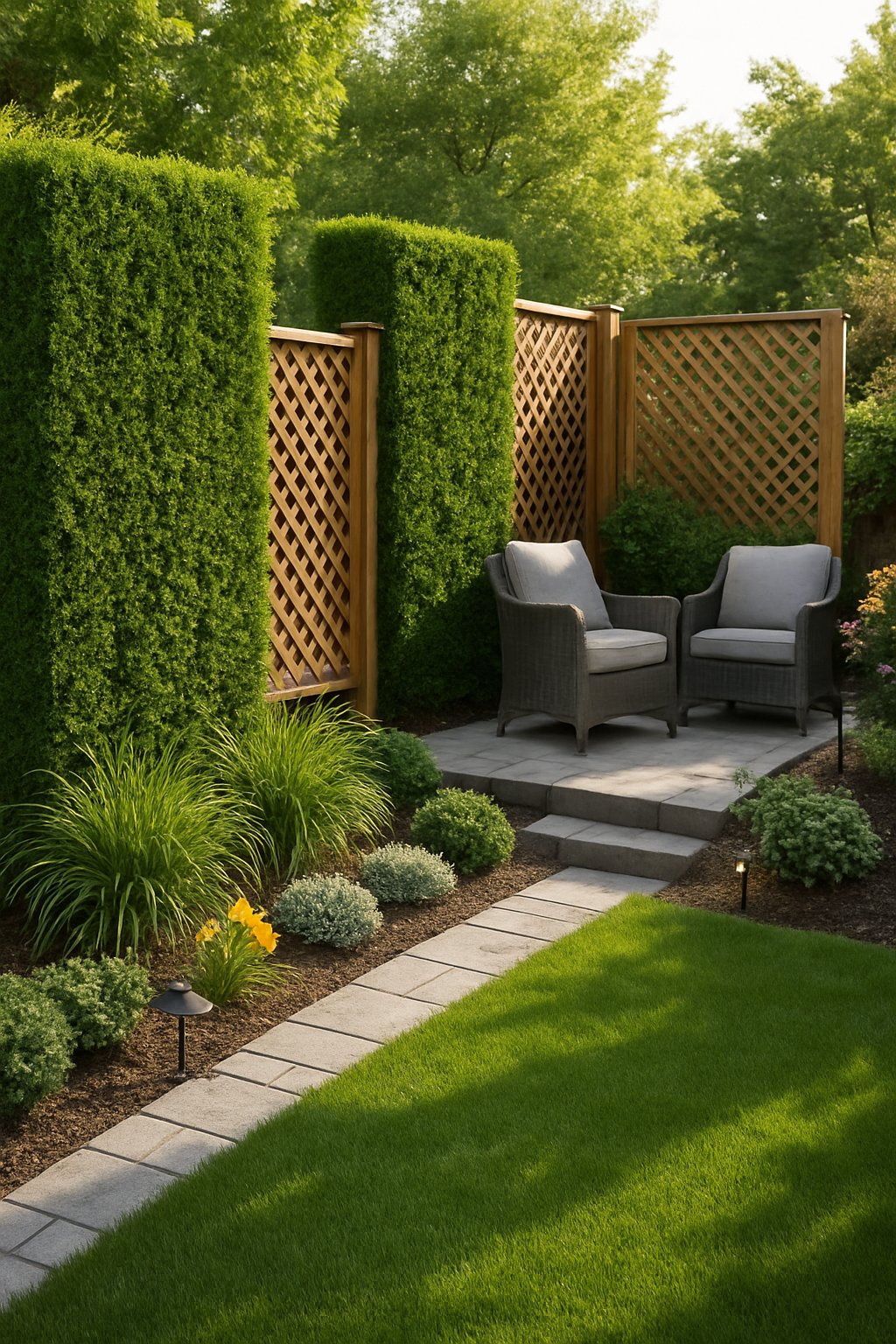
Ever feel like your backyard is on display for the whole street? Privacy screens with hedges or lattice panels can fix that in a snap.
Hedges act like living green walls, blocking noise and prying eyes. They change with the seasons and bring life to your space.
If you want something faster or with a bit more flair, try lattice panels. They let in sunlight and give climbing plants a place to grow.
You can paint or stain lattice to match your house, and it’s easy to add a splash of color with flowering vines. Your yard gets privacy and a little charm at the same time.
Expert Tip From MrPlanter: Go for fast-growing hedges if you need privacy quickly. Climbing flowers on lattice add color and a lively vibe.
17. Use sustainable materials to keep your design eco-friendly.
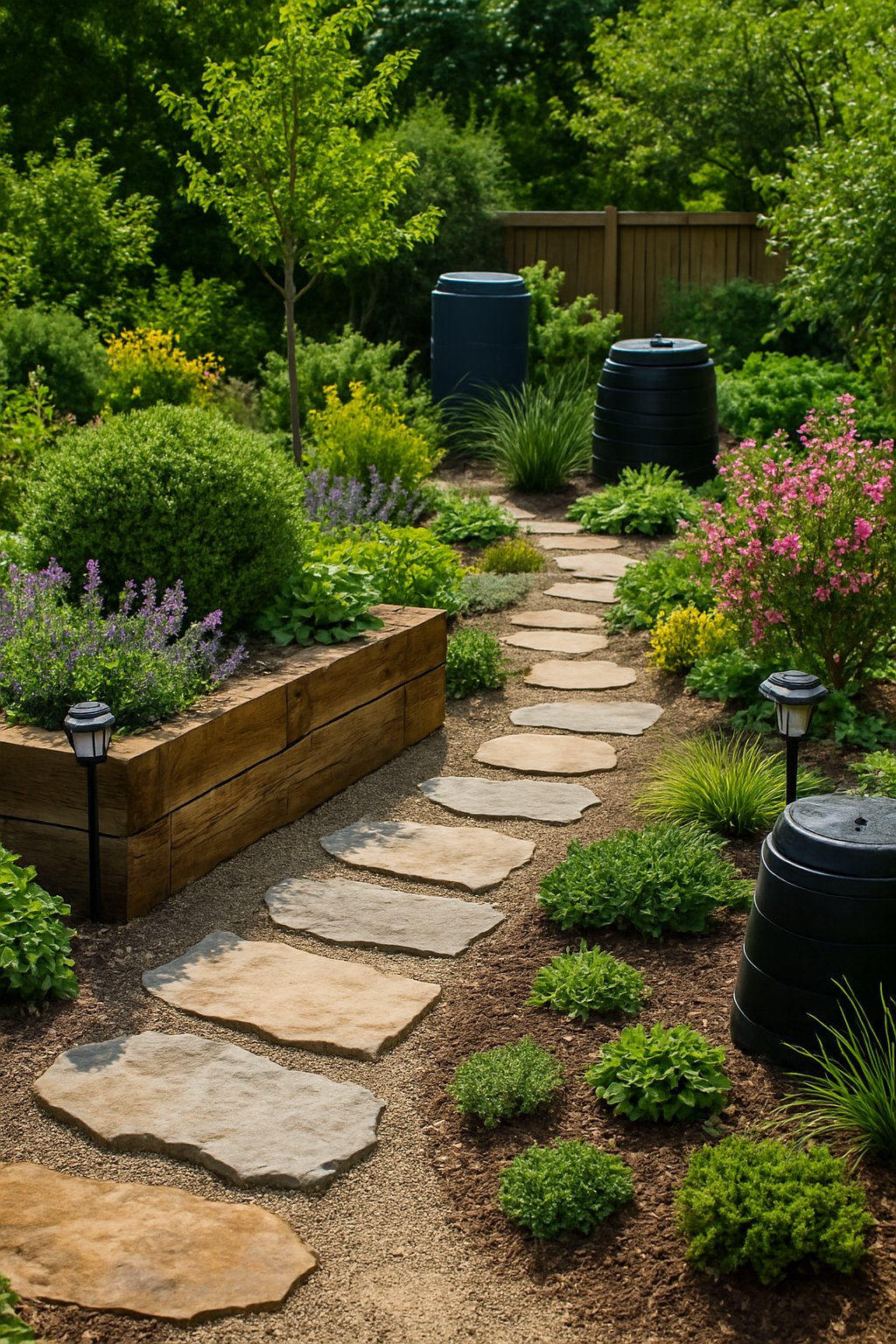
You probably don’t realize how much your material choices matter. Picking recycled wood, bamboo, or natural stone cuts down on waste and saves resources.
These materials last longer and usually need less maintenance, so you use less water and fewer chemicals. Local materials are even better—they don’t travel far, so their carbon footprint stays small.
Native plants also fit right in with your landscape, helping out local birds and bugs. You’re not just making your yard look good; you’re doing something good for the planet, too.
Start with a few green choices and let your garden grow into a healthy, lasting spot.
Expert Tip From MrPlanter: “Mix recycled materials and native plants for a unique look that’s kind to the earth. The little changes really add up.”
18. Design a small wildlife habitat with bird feeders and butterfly plants.
Think your tiny yard can’t attract wildlife? Think again. Even a small spot can buzz with life if you add a few bird feeders and some butterfly-friendly plants.
Try filling feeders with different seeds to bring in a variety of birds. They love options, and you’ll get to watch all sorts of visitors.
Plant milkweed or coneflowers for butterflies—they’ll show up for the nectar and bring even more color to your garden.
Don’t skip a shallow water dish or birdbath, and tuck in a few dense shrubs or a log pile for shelter. You’ll be surprised at how lively your yard gets.
Expert Tip From MrPlanter: Keep feeders clean and fresh. Plant in layers so birds and bugs have plenty of spots to eat and hide.
19. Create zones: dining, gardening, relaxing spots separated visually.
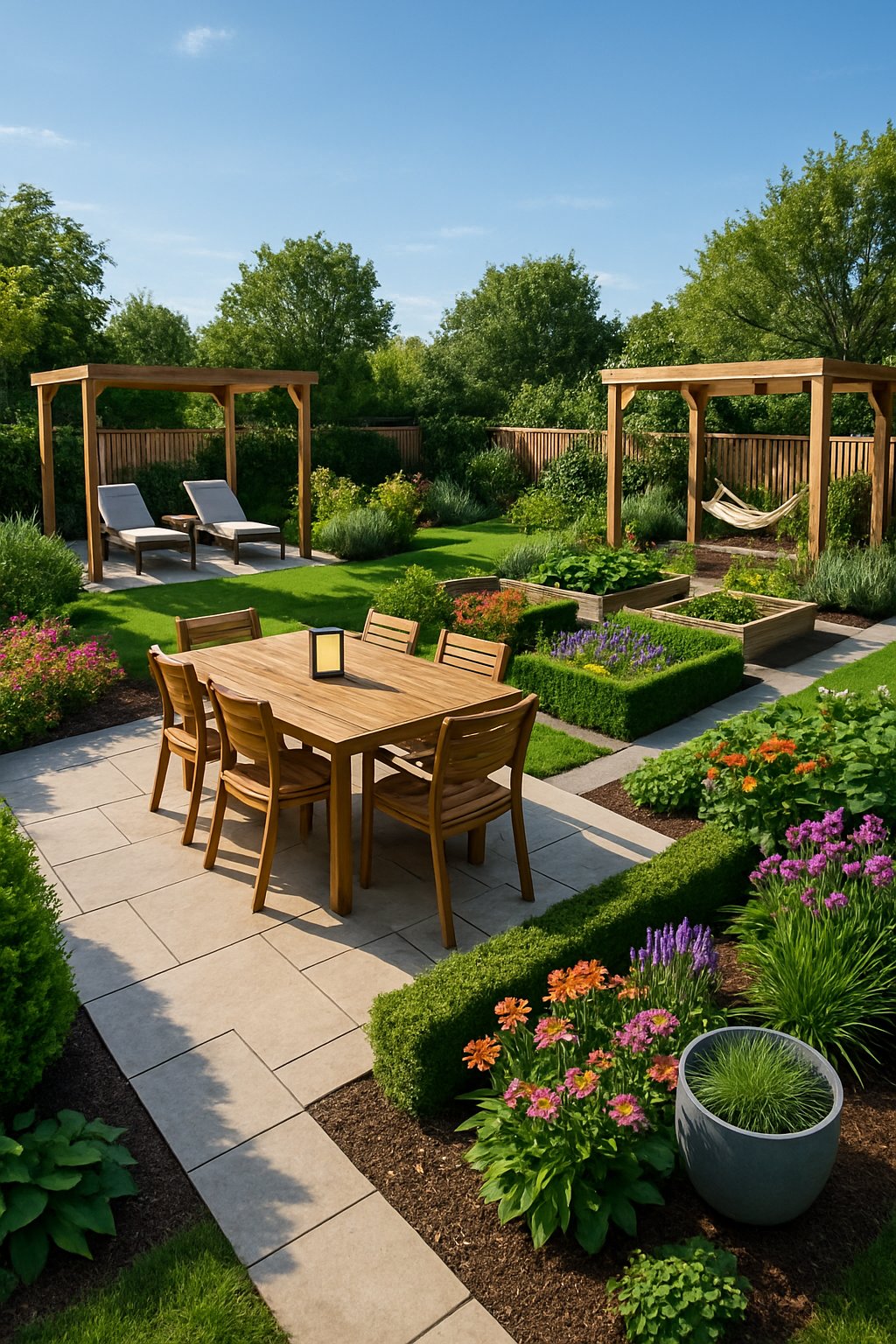
Ever notice how a backyard feels less chaotic when each area has its own vibe? Setting up zones for dining, gardening, and relaxing makes your space work better for you.
You can use different plants, materials, or just a small step up or down to show where one area ends and the next begins. A hedge or a row of shrubs can block the view without boxing you in.
Paths, decks, or a stone walkway naturally guide people from spot to spot. Each zone feels special because it’s got its own purpose.
Expert Tip From MrPlanter: Stick with similar colors or materials across zones so your yard still feels connected. Even a simple change in floor material can define a space without fences.
20. Incorporate vertical gardening to save space.
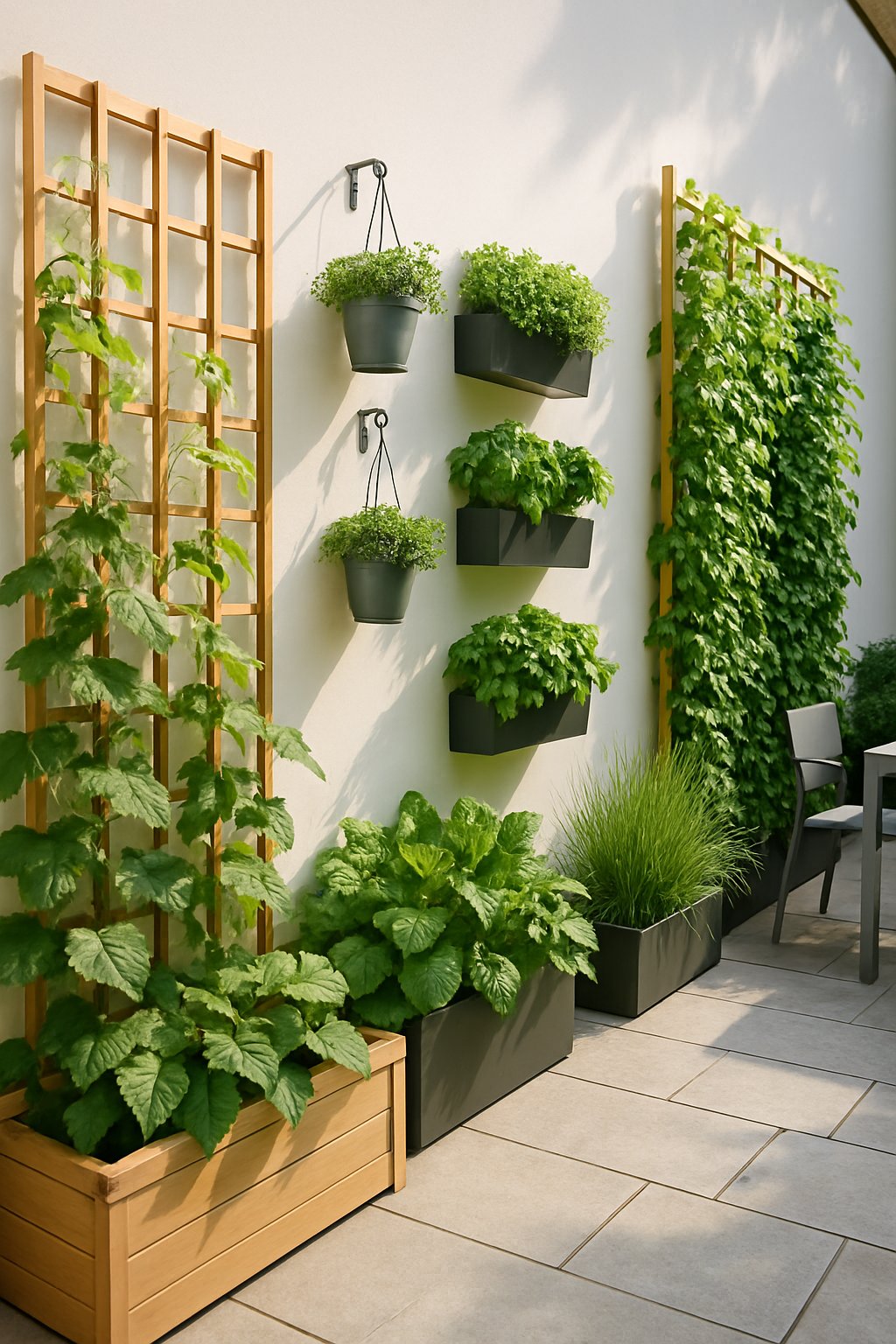
Don’t have a big yard? No problem—vertical gardening lets you grow up, not out.
Use walls, fences, or racks to pack in flowers, herbs, or veggies. It’s perfect for apartments, patios, or balconies where space is tight.
Vertical gardens also clean the air and help cool things down. You get more greenery without losing floor space, and it just looks awesome.
Start with easy plants like herbs or succulents to get the hang of it. Vertical gardening is low effort and high reward, so have some fun with it!
Expert Tip From MrPlanter: Begin small and build your confidence. You’ll be amazed at how much you can grow in a vertical space.
21. Choose drought-resistant plants for water efficiency.
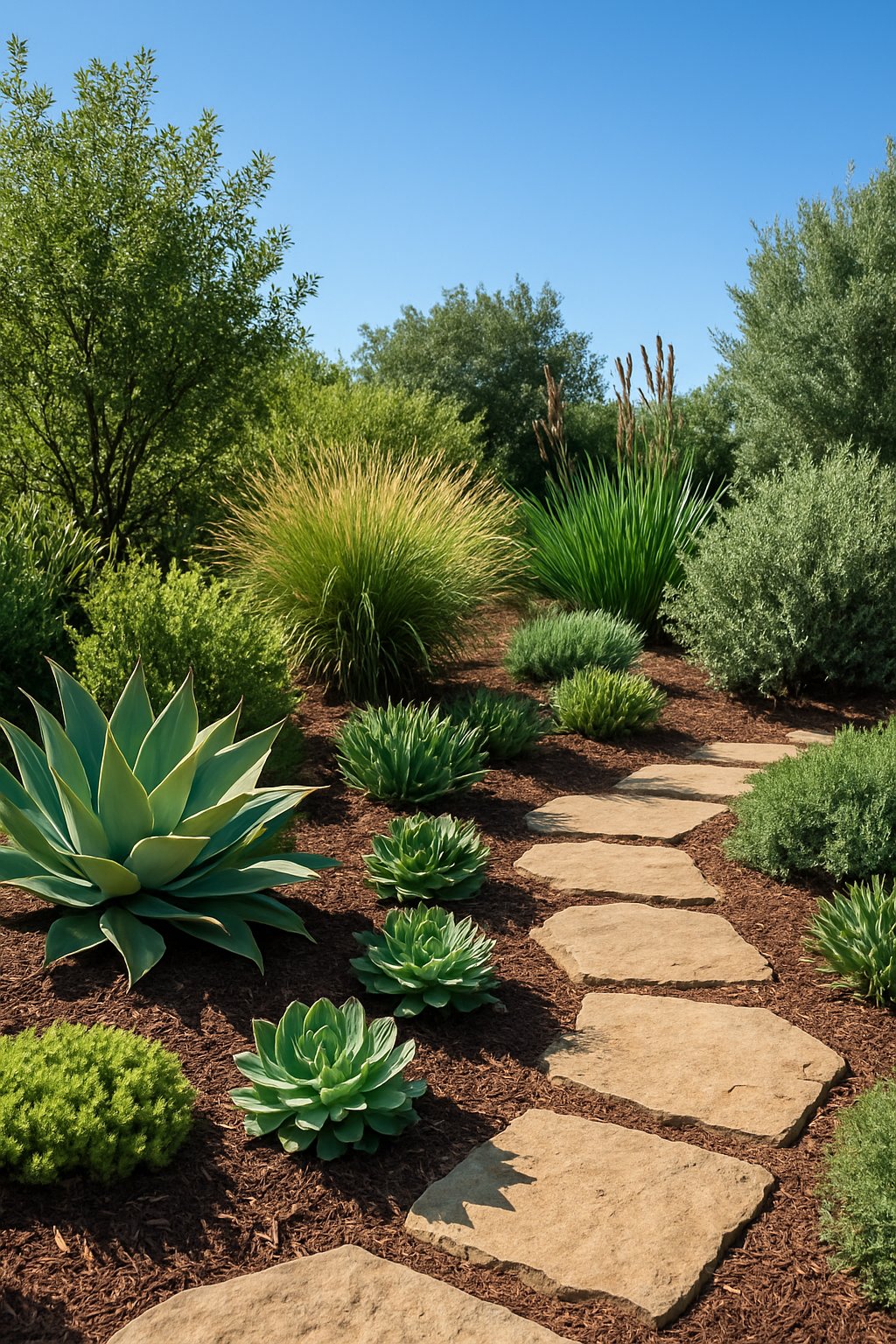
You don’t need a ton of water to have a gorgeous garden. Drought-resistant plants thrive with less, saving you time and helping the planet.
There are loads of options—succulents, grasses, and lots of native plants come in different shapes and colors. Local plants already know how to handle your climate.
Group plants with similar water needs together, and you’ll avoid overwatering. Less time with the hose, less stress for you, and healthier soil for your plants.
Expert Tip From MrPlanter: “Match your plant choices to your climate and mulch well for even better water savings. Healthy soil holds water, so don’t skip that step!”
22. Install a fire pit for cozy evenings
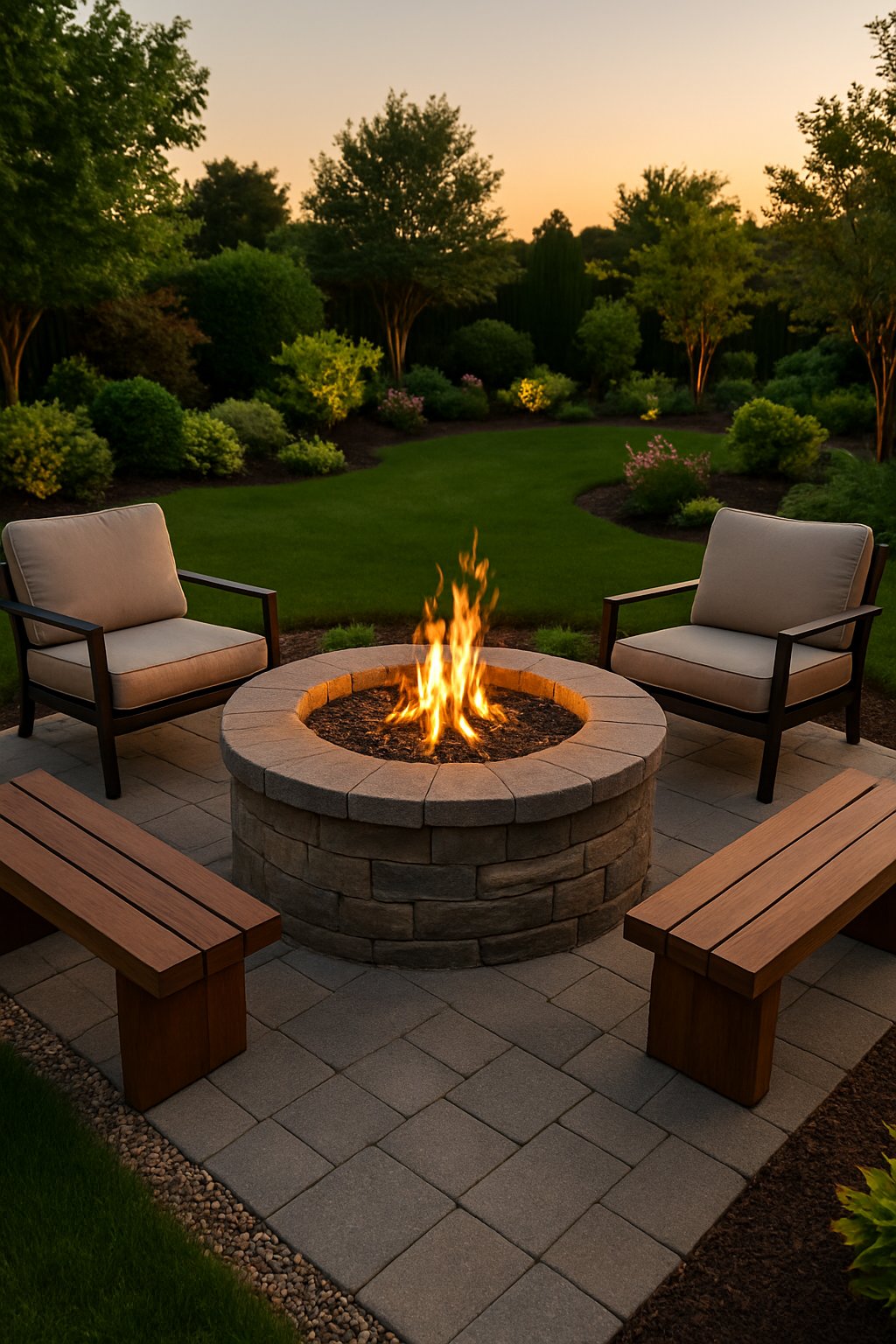
A fire pit isn’t just a fancy extra—it totally changes how you use your backyard. Suddenly, you’ve got a warm, glowing spot to hang out, even when it’s chilly.
Fire pits pull people together for stories, marshmallows, or just a quiet evening. That cozy light makes your space feel welcoming.
You don’t need a huge budget, either. Simple stone or brick designs last ages and look great. Just set up safe seating and keep flammable stuff far away.
Expert Tip From MrPlanter: Pick a spot with good airflow and clear space. Always have water or an extinguisher handy—better safe than sorry when you’re enjoying those cozy nights.
23. Plant trees strategically for shade and wind protection
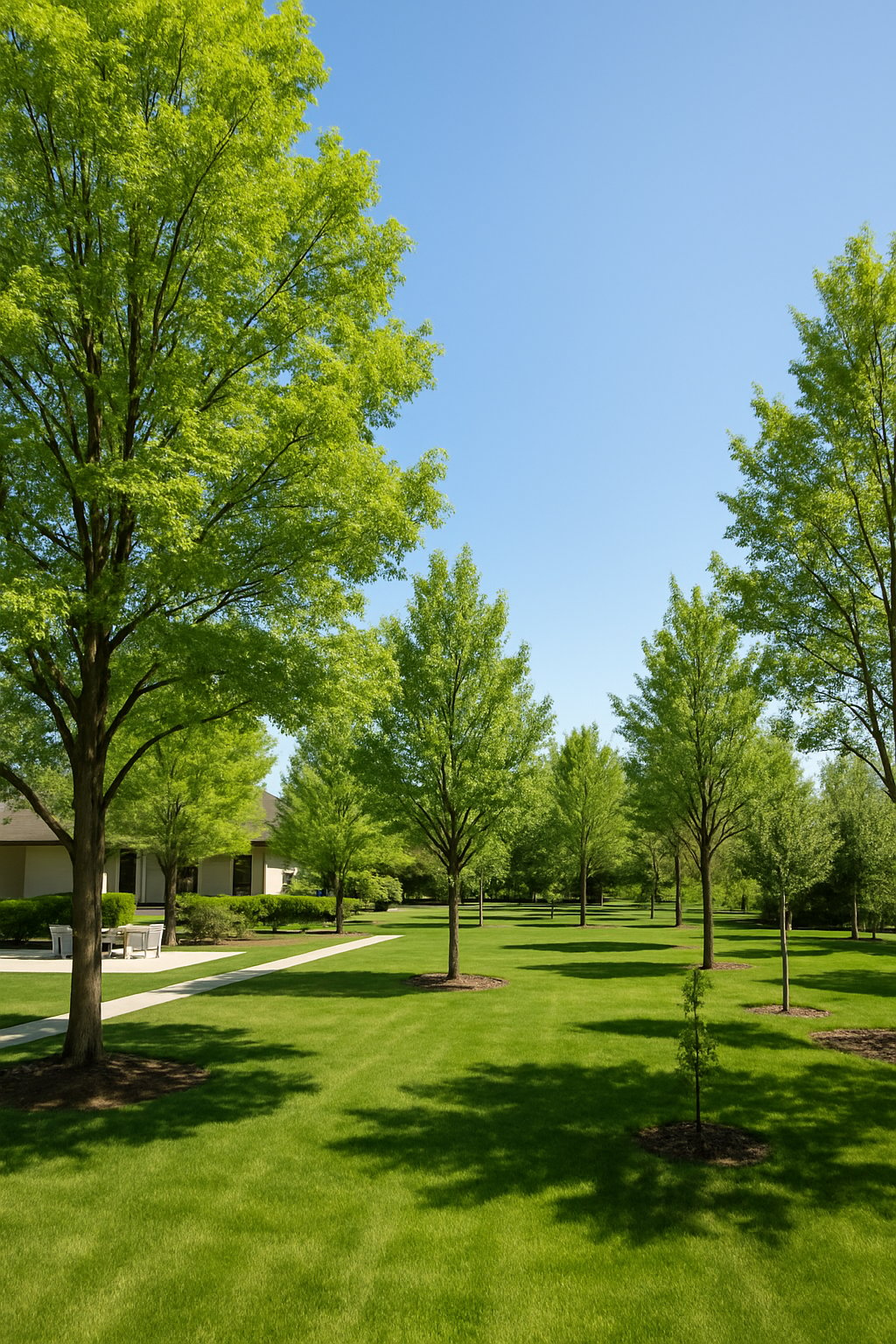
Did you know you can actually lower your home’s energy bills just by planting trees in the right spots? Put them on the south and west sides to block that harsh afternoon sun in summer.
Your house will stay cooler, and you’ll spend less on air conditioning. Evergreens on the north side act like a shield, cutting down cold winter winds before they hit your walls.
Fences or walls with trees can guide wind away or trap warm air where you want it. It’s not just about looks—smart planting makes your outdoor space comfy all year.
Expert Tip From MrPlanter: Pick trees that fit your local climate for the best results. Start small, watch them grow, and keep tweaking your setup to boost comfort around your home.
24. Use native grasses to add texture and movement.
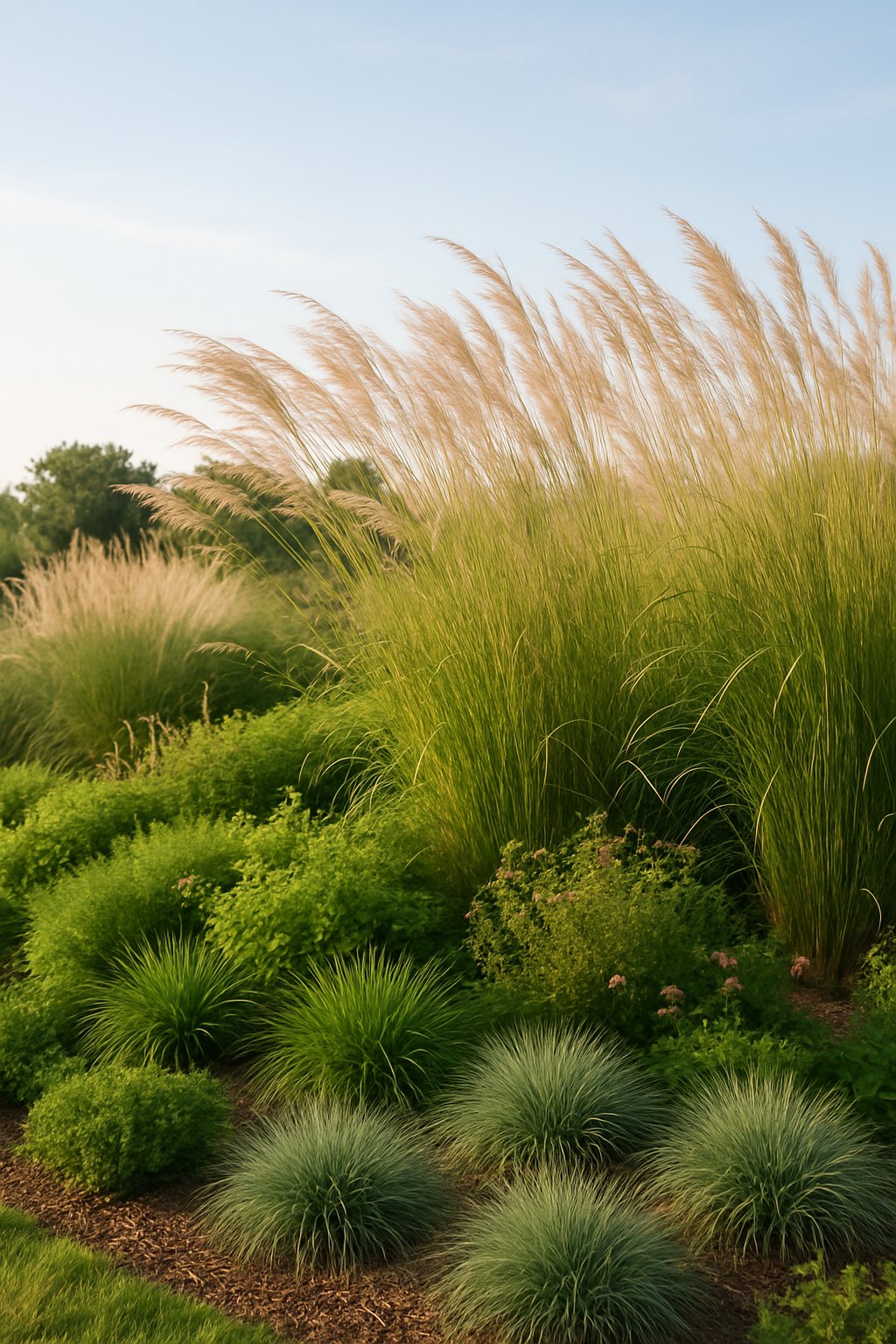
You might look at grasses and think, “Eh, they’re kind of plain.” But honestly, native grasses can totally transform your garden. When the wind picks up, they sway in a way that just feels… calming, almost hypnotic.
That gentle movement adds a softness you won’t really get from most other plants. Suddenly, your yard feels more relaxed, more alive—almost like it’s breathing with you.
Native grasses also just get your climate and soil. They usually drink less water and don’t demand much fuss, so you’ll spend less time working and more time enjoying.
On top of that, local birds and bugs will thank you. These grasses offer a cozy spot for all sorts of wildlife to hang out and thrive.
If you mix up the types—some with fine blades, others with bold, tall clumps—you’ll see all kinds of textures popping up. Honestly, your garden will stay interesting no matter the season.
Expert Tip From MrPlanter: “Start small with a few native grasses and watch your garden come alive with texture and movement. They’re easy to care for and really help local wildlife too.”
